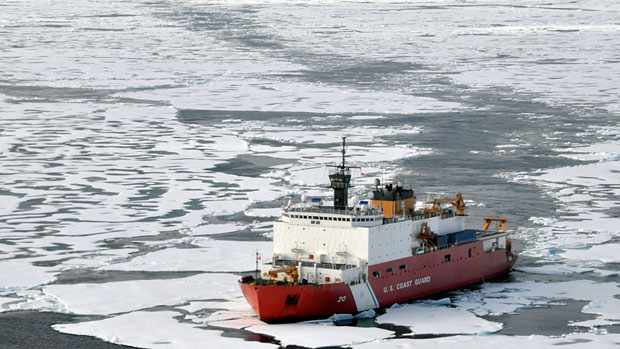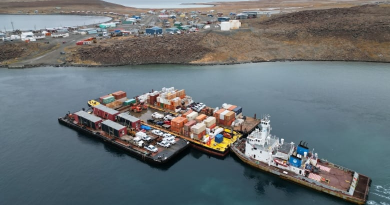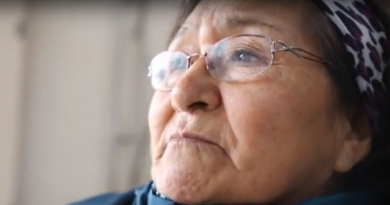New Arctic R&D center in Alaska

The Department of Homeland Security has launched a new research and development center in Alaska, looking to a future in which sophisticated algorithms will help the Coast Guard manage its Arctic responsibilities and respond to emergencies there.
More than 100 federal and state dignitaries, including Homeland Security’s Deputy Undersecretary for Science and Technology Robert Griffin and Rear Adm. Daniel Abel, commander of Coast Guard forces in the Arctic, gathered last week for a ribbon cutting ceremony at the University of Alaska Anchorage.
The event marked the formal opening of the Arctic Domain Awareness Center. The center has actually been operating since August 2014 with a $17 million federal grant. The past year has seen the creation of a network of academics, industry groups, community stakeholders and government agencies working on technology and Arctic issues. At the university ceremony, some of the early accomplishments of this network were showcased.
“ADAC has already begun developing systems and partnering with rural communities to improve maritime situational awareness and crisis response in the Arctic environment,” said the center’s executive director, Helena Wisniewski.
Weather and satellite imagery
Last week, Wisniewski, UAA’s vice provost for research and graduate studies, corralled the visiting officials into a small room at the campus’s ConocoPhillips Integrated Science Building for a presentation.
With the help of data scientist Rob Bochenek, Wisniewski introduced the audience to the ADAC-developed program known as an Integrated Intelligent System of Systems.
On two widescreen television screens, Bochenek toggled between maps, graphs and other media for a snapshot of conditions in the Bering Strait and along Alaska’s Arctic coast.
The system, Bochenek said, pulls data from an array of sources centralizing the information into a single interface. Weather, maritime traffic, satellite imagery and sea ice data are a few of the inputs that can be represented on screen at any given moment.
Information that comes in less quantifiable formats, such as traditional knowledge, observer reports on walruses and video feeds from unmanned aircraft, can also be incorporated.
“We have this huge knowledge base … and we need to build these mosaics of data on the fly,” said Bochenek, who works at Axiom Data Science, a private firm based in Anchorage.
Oil spill response
In the second half of the demonstration, Wisniewski and Bochenek programmed a simulated oil spill. With the help of the software, emergency responders would have immediate access to sea currents, ice conditions and other factors critical during a spill, Wisniewski said.
Rear. Adm. Abel endorsed data-driven tools as necessary for the Coast Guard in the coming years of increased Arctic melting and longer seasons of activity. “How do we open the Arctic and not use 1800s technologies — buoys and lighthouses?” he asked.
“How do we fuse your walrus information with what my GPS says on the bridge of a ship? … That’s where we really get to where we have a robust real-time system to make sure we de-conflict all the emerging activities in the Arctic.”
In addition to the local Coast Guard leadership, the audience included top research directors and Arctic planners, who flew in from the East Coast.
Bert Macesker, the executive director of the Coast Guard Research and Development Center, said the Coast Guard is considering “piping in” the data system to the command center in Juneau, but he said that would take some additional work.
“We need that layer that interprets (the data) so that we can act on it,” he said. “You can’t just insert new technology into an organization like the Coast Guard. There’s always a long tail into something new.”
Related stories from around the North:
Asia: Asia ahead on preparing for polar climate change, says U.S. Arctic rep, Eye on the Arctic
Canada: Arctic nations sign coast guard agreement, Radio Canada International
Greenland: Research ship returning from Greenland echoes worries about ocean plastics, Radio Sweden
Iceland: More Arctic research, intn’l cooperation needed, Barents Observer
Russia: Russia to open research center on Svalbard, Barents Observer
Sweden: Government to form council of researchers for sustainable development, Radio Sweden
United States: Grim outlook for Arctic wildlife in oil spill, Alaska Dispatch News



